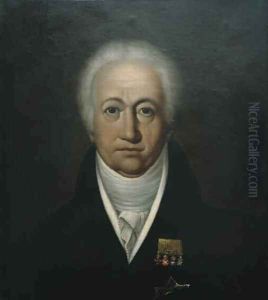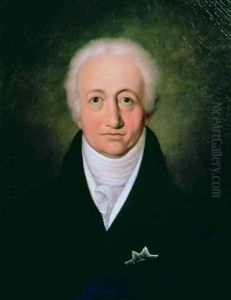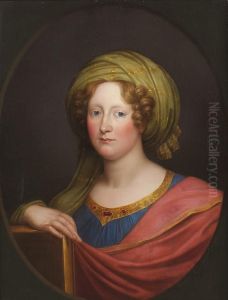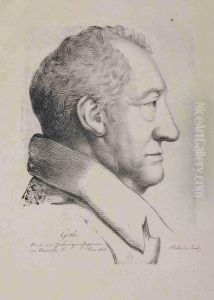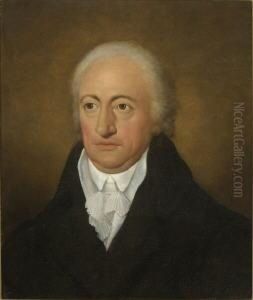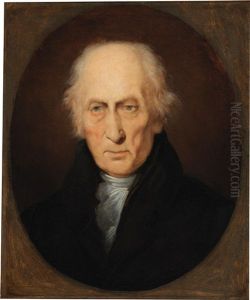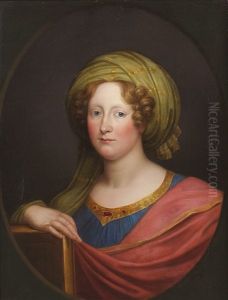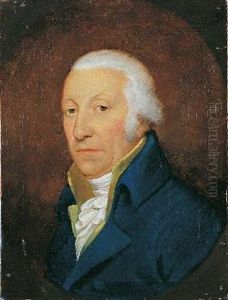Ferdinand Jagemann Paintings
Ferdinand Jagemann was a German artist, born on February 1, 1780, in Merseburg. He emerged as an influential figure in the German art scene during the late 18th and early 19th centuries. Jagemann's work primarily encompassed portraiture, where he excelled in capturing the essence of his subjects with a keen eye for detail and a profound sense of realism. His contributions to the art world spanned over several decades, during which he developed a distinctive style that set his works apart from his contemporaries.
Initially, Jagemann's artistic journey began under the guidance of his father, Georg Melchior Kraus, who was also a noted artist of his time. This early exposure to art profoundly influenced Jagemann, shaping his artistic direction and honing his skills. He furthered his education at the Weimar Princely Free Drawing School, where he was significantly influenced by Johann Wolfgang von Goethe, a towering figure in German literature and an avid art enthusiast. Goethe's patronage and guidance played a crucial role in Jagemann's development as an artist, providing him with opportunities to expand his horizons and refine his technique.
Throughout his career, Jagemann achieved considerable fame and recognition for his portraits, which were highly sought after by the elite of German society. His ability to capture the personality and demeanor of his subjects with remarkable accuracy and emotional depth earned him a place among the premier portrait artists of his time. Jagemann's portraits were not merely representations of physical appearances; they were insightful glimpses into the character and spirit of the individuals he portrayed, making each piece a unique narrative.
In addition to his portraiture, Jagemann was also involved in academic circles, contributing to the arts education in Germany. He held a prominent position at the Weimar Princely Free Drawing School, where he influenced generations of young artists, sharing his knowledge and passion for art. His teachings and mentorship helped foster a vibrant artistic community in Weimar, cementing its status as a cultural hub in Germany.
Ferdinand Jagemann's legacy extends beyond his contributions to portraiture and education. He was a pivotal figure in the transition of German art from the late 18th century's classical influences to the more emotionally charged and individualistic expressions of the 19th century. His works are preserved in various museums and collections, serving as a testament to his skill, vision, and impact on the world of art. Jagemann passed away on July 12, 1852, in Weimar, leaving behind a rich body of work that continues to be celebrated for its artistic merit and historical significance.
